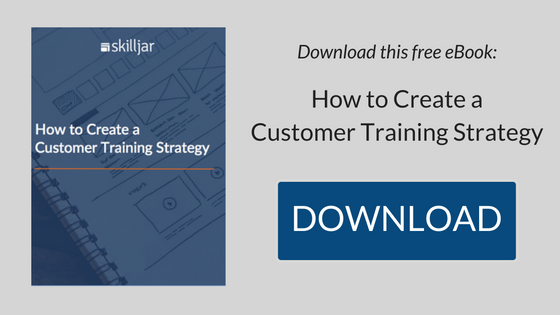 It’s an unfortunate tendency in the training industry to create a strategy, build the courses, and then never touch them again after they’ve been published. This toxic habit of allowing for static training courses can be lethal to your training program, especially if the courses are neither mandatory nor free.
It’s an unfortunate tendency in the training industry to create a strategy, build the courses, and then never touch them again after they’ve been published. This toxic habit of allowing for static training courses can be lethal to your training program, especially if the courses are neither mandatory nor free.
Who wants to spend their time and money on online training that’s outdated, difficult to access, and unintuitive for a modern audience? Why would a training manager want to field complaints from users who expect more from their training program?
Here are 5 tell-tale signs it’s time to revamp your customer training strategy:
1. It’s not cloud-based
If your training courses don't live in cloud-based software, you're missing out on several big benefits. Cloud-based software is regularly updated, meaning your users don't have to deal with versioning and technology lags, and don't have to re-purchase the technology every time it's updated (think Windows software -- and how you have to pay to download the updated versions every few years). Cloud-based software is better maintained and more modern than software that isn't in the cloud.
2. It still looks like it did 10 years ago
Odds are, your organization has undergone some changes over the years. Did you update your logo or theme colors? Change your slogan or contact information? Even change your name? Whenever these updates take place, training content is often forgotten about in the re-branding process.
It’s not unheard of for a learner to log into a training course and be transported back to how your organization looked a decade ago. This mistake can kill your credibility and professionalism for external learners. If your training courses still display out-of-date information or branding, it’s time to update them with modern materials, so everything is cohesive with your organization’s website.
3. It isn’t compatible with third-party integrations
The ability to integrate your LMS-based training with web-based CRMs (such as Salesforce.com) is essential for user satisfaction, and it also makes the job of the training manager easier. Integrating with third-party programs can help with analytics, the ease of the user experience, and overall efficiency.
4. It doesn’t have the analytic and reporting abilities that you need
You should be able to generate reports easily from within your LMS. If your LMS (or other learning software) is not reporting the metrics you need, it’s much harder to measure the effectiveness and ROI of your training program. Analytics also help you understand the behavior of your learners, which is beneficial for instructional designers and can help to improve future training courses.
5. Users aren’t able to utilize the training they need, when they need it
Nobody likes having to search through an entire training program to find the small bit of information they need in the moment. That's why it's important that your LMS allows for a "Learning Library." This feature centralizes training topics so users can self-direct to the courses they need, right when they need them.

